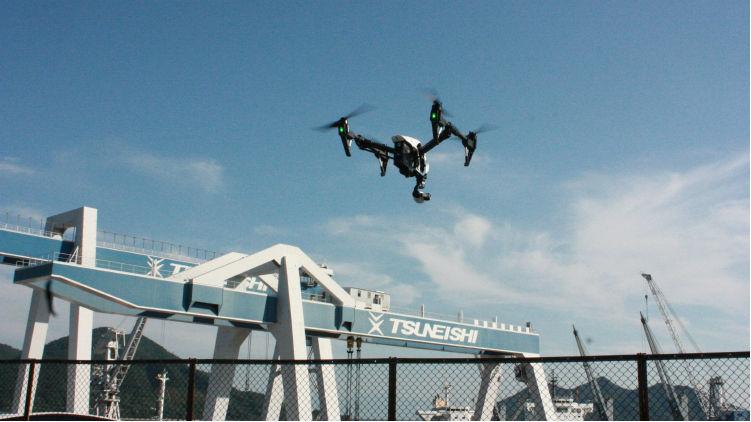Shipbuilder Looks to Drone Technology

Drone technology may become a staple of day to day operations for a Japan-based shipbuilder that is currently exploring the commercial applications of drones in one of its facilities.
Tsuneishi Holdings Corporation is analyzing the potential for using drones at its Hiroshima shipbuilding facility in an effort to increase both safety and productivity in daily operations. The drone, weighing in at about 3 kilograms (6.6 pounds) is able to capture high-quality photos and video and transmit the data live back to a central information processing area. From there, the Tsuneishi team hopes to use the collected information to oversee operational progress, facility inspections and potentially manage disaster situations from a distance.
In a written statement yesterday the company spoke about the technology’s potential to aid in business operations by saying, “We have high hopes that this latest technology will help us increase efficiency at our factories and facilities, and also allow us to gather information quickly in times of disaster.”
Tsuneishi’s test took place over a four day period from May 18 – 21 and covered a wide variety of applications. In particular, the activities sought to test a drone’s capabilities in situations that might be dangerous for workers. This included the inspection of equipment located on roofs or high places on cranes as well as the survey of disaster areas. Additionally, the drone was used to oversee operational progress of the facilities such as construction and placement of blocks.
These most recent tests by the Japanese corporation reflect a growing trend of applying drone technology to commercial applications.
According to Business Insider the Compound Annual Growth rate in the U.S. for commercial and civilian drones combined is 19% over the next five years compared with only a 5% growth rate in the military sector. The technology news site also predicts that regulation aimed at easing commercial drone bans could allow for widespread restricted UAV flights by 2017.
Various organizations are overwhelmingly looking to drones in a bid to reduce risks and improve efficiency. Drones are able to safely access high or remote areas that otherwise could prove dangerous for human workers. Typically workers need ladders, scaffolding or hazard suits to even enter certain areas and face compounded safety risks once on-site.
Additionally, time spent data collecting often decreases as thousands of conceivable angles can be canvased in a fraction of the time it would take workers. With next generation drone technology, images and video is becoming increasingly sharp, allowing for the potential to reduce or even eliminate the on-site human component entirely.
However, while close-proximity, physical tasks for humans might be reduced in the coming years, drone manufactures claim the need for skilled workers to analyze data will increase. Thus, drones may not replace human workers, but may simply shift more menial tasks away from them, while at the same time creating more jobs on the operational and analytical end.
Tsuneishi Holdings Corporation also includes businesses in the environment and energy as well as service sectors. If successful, the corporation is looking into applying the drone technology to various facilities within its organization.
